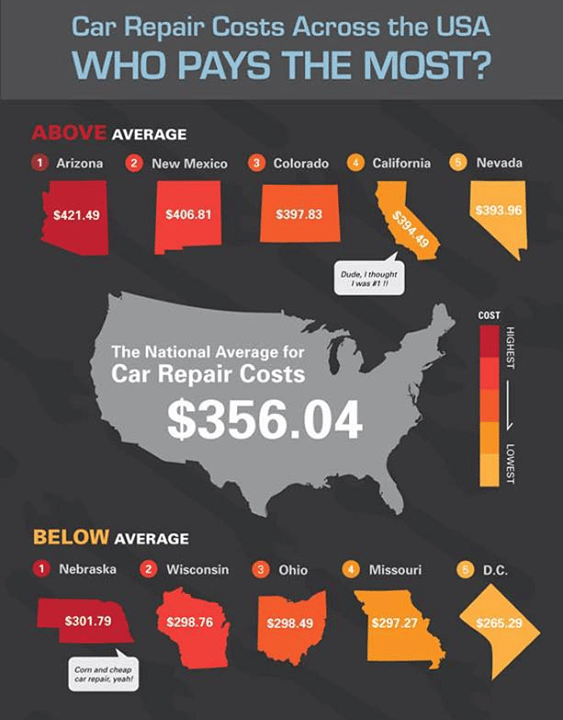Translating Your Car'S Caution Indicators: What They Genuinely Signify
Translating Your Car'S Caution Indicators: What They Genuinely Signify
Blog Article
Material Writer-Termansen Alvarado
When you lag the wheel, those glowing warning lights on your dashboard can be a little bit puzzling. Do you understand what they're attempting to inform you concerning your vehicle's wellness? Understanding the relevance of these lights is vital for your security and the longevity of your automobile. So, the next time one of those lights pops up, wouldn't you want to analyze its message precisely and take the necessary steps to address it?
Common Caution Lighting and Interpretations
Recognize common warning lights in your cars and truck and understand their significances to guarantee risk-free driving.
The most common warning lights consist of the check engine light, which signifies concerns with the engine or discharges system. If this light begins, it's vital to have your automobile checked without delay.
The oil stress advising light suggests reduced oil pressure, calling for instant focus to prevent engine damages.
A blinking battery light could recommend a defective billing system, possibly leaving you stranded otherwise resolved.
The tire pressure monitoring system (TPMS) light alerts you to reduced tire stress, affecting car stability and fuel performance. Disregarding this can lead to unsafe driving conditions.
The abdominal light shows a problem with the anti-lock stopping system, endangering your capacity to quit promptly in emergencies.
Lastly, the coolant temperature level advising light warns of engine getting too hot, which can lead to extreme damage otherwise dealt with quickly.
Understanding mobilecarwashnearme will assist you resolve concerns without delay and preserve risk-free driving problems.
Relevance of Prompt Attention
Recognizing the typical caution lights in your automobile is only the primary step; the importance of immediately resolving these warnings can not be highlighted enough to ensure your security when driving.
When a warning light illuminates on your control panel, it's your vehicle's means of communicating a possible concern that needs interest. Disregarding https://brake-service-near-me16172.blogdal.com/31623116/the-effect-of-auto-detailing-on-resale-value-findings-from-various-researches can bring about extra extreme troubles in the future, compromising your safety and security and potentially costing you more in repairs.
Prompt attention to alerting lights can prevent failures and mishaps. For example, a flashing check engine light could show a misfire that, if left unattended, could trigger damages to the catalytic converter. Addressing this quickly can conserve you from an expensive fixing.
Similarly, a brake system alerting light may indicate low brake liquid or worn brake pads, critical elements for your safety when driving.
DIY Troubleshooting Tips
If you see a warning light on your control panel, there are a couple of DIY repairing suggestions you can attempt prior to looking for professional help.
The initial step is to consult your cars and truck's manual to comprehend what the specific caution light suggests. In some cases the problem can be as straightforward as a loosened gas cap triggering the check engine light. Tightening https://www.wnep.com/article/news/local/luzerne-county/luzerne-county-auto-repair-closing-up-shop-after-93-years-in-business-larry-churnetski-daryl-metric/523-f2875077-8cfd-4d29-b70d-867823ce8d3d may settle the issue.
https://transmissionfluidchangeco17284.dreamyblogs.com/31565378/an-important-guide-to-the-must-have-devices-in-every-vehicle-service-center-unveiling-the-keys-behind-effective-automobile-maintenance is a low battery, which can trigger numerous advising lights. Examining the battery links for rust and guaranteeing they're secure may deal with the issue.
If a caution light lingers, you can attempt resetting it by separating the automobile's battery for a couple of mins and afterwards reconnecting it. Additionally, checking your automobile's liquid degrees, such as oil, coolant, and brake liquid, can aid troubleshoot cautioning lights connected to these systems.
Verdict
Finally, comprehending your car's caution lights is essential for maintaining your automobile running efficiently and securely. By quickly dealing with these notifies and recognizing what they suggest, you can stay clear of costly repair work and possible malfunctions.
Remember to consult your car's handbook for specific information on each alerting light and do something about it as necessary to make certain a hassle-free driving experience.
Keep informed, remain secure on the road!
